Affiliate links on Android Authority may earn us a commission. Learn more.
Galaxy Gear hands-on and first impressions

Along with the Note 3 and the new Note 10.1, Samsung unveiled today the much anticipated Galaxy Gear smartwatch. Designed as a companion to Galaxy smartphones, the Gear is Samsung’s big effort to get a head start in the wearable computing race, at a time when a multitude of competitors are devising their own strategies for a new generation of computers.
As so many failed or lacklustre products have proved before, building a smartwatch that people actually like is very difficult. Will Samsung succeed with the Gear? Here are our first impressions.
Design
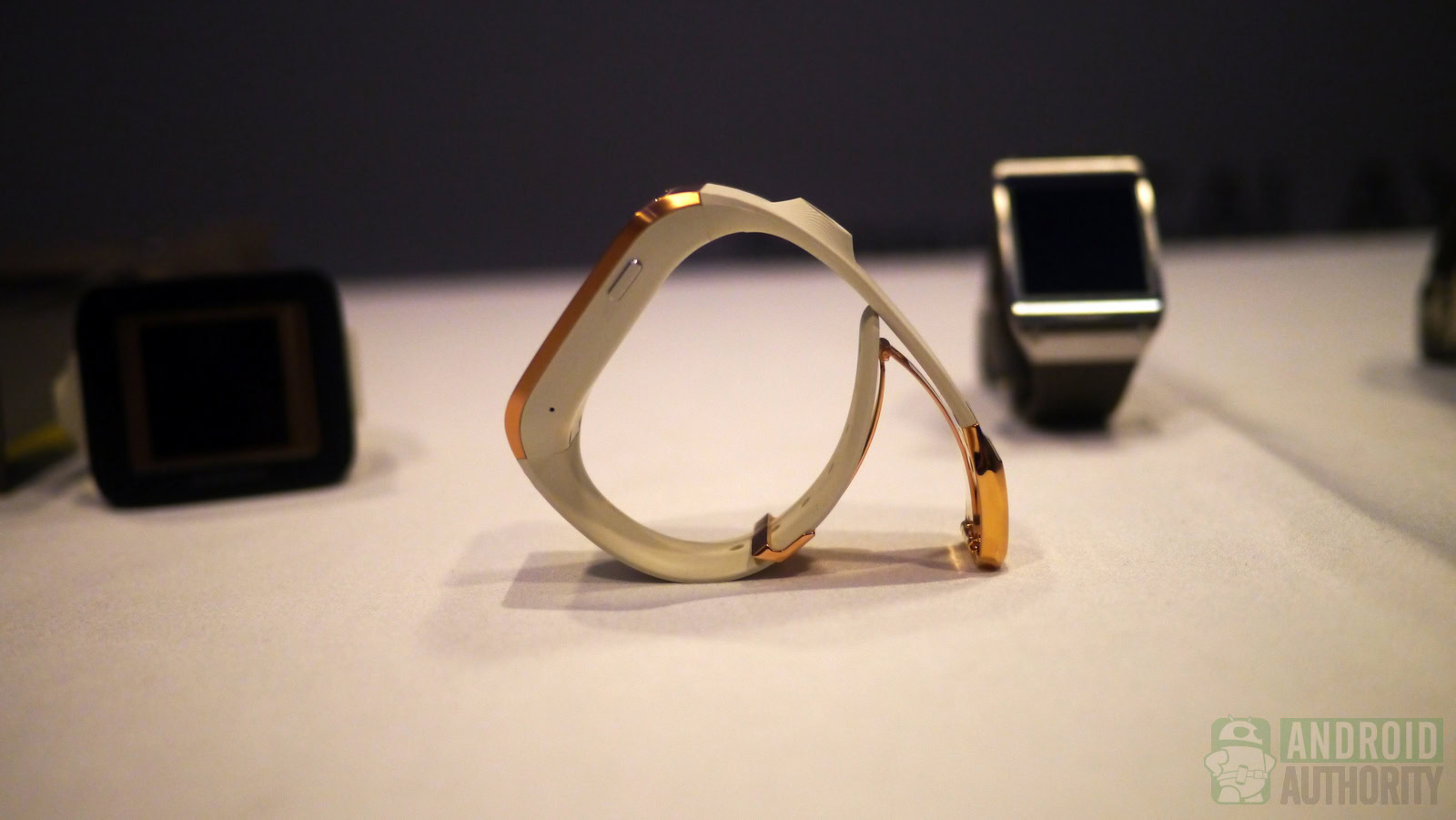
The Galaxy Gear looks pretty much like a, well, watch, but a few details give it away as something smarter. To start with the basics, the Gear is mostly made of a solid plastic with a thin stripes texture. The sapphire-covered display is surrounded by a metal frame, made of what seems to be brushed aluminum or stainless steel and available in two colors – silver and pink gold.
The device weighs just 74 grams and, when we tried it on, it didn’t feel heavy or cumbersome at all. With that said, Samsung had to accommodate a lot of electronics in the frame and strap, which explains why the device feels a bit awkward. For instance, the 1.9MP camera is placed in the top side of the strap, just above the display, and the strap bulges a little to accommodate the lens.
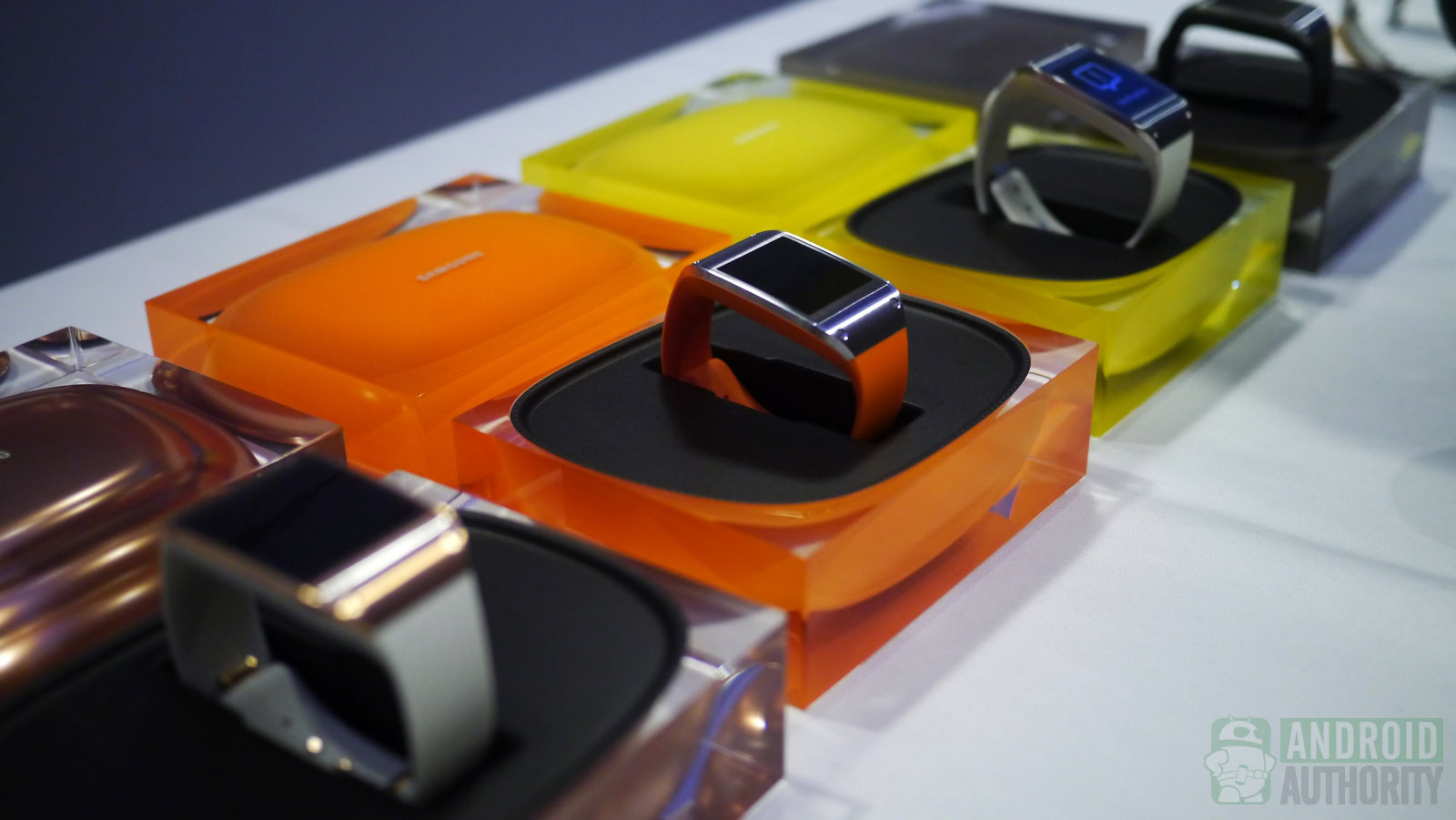
The metal clasp felt solid and well designed, and the strap was adjustable enough to accommodate wrists of all sizes. Thanks to the metal front, the device feels “luxurious”, though, at least for me, it also felt fragile, like something I could easily scratch. Samsung may want to design a more rugged version of the device in the future. Speaking of which, they said the Galaxy Gear is splash-resistant (IP55). That means the occasional water contact is okay, but you won’t want to go swimming with the Gear on.
Six colors will be available at launch: Jet Black, Mocha Gray, Wild Orange, Oatmeal Beige, Rose Gold, and Lime Green.
Features and specs

The Galaxy Gear smartwatch features a square 1.63-inch Super AMOLED display of 320 x 320 pixels resolution, which translates into a pretty good pixel density of 278 ppi. On the right side of the device, you will find a “Home Key” which takes you “home”, which is the watch face.
The device is powered by an unspecified Exynos processor clocked at 800MHz and 512MB of RAM. The 1.9MP camera can record video in HD (720p), though the device can only shoot up to 10 seconds of video. There are 4GB of internal storage.
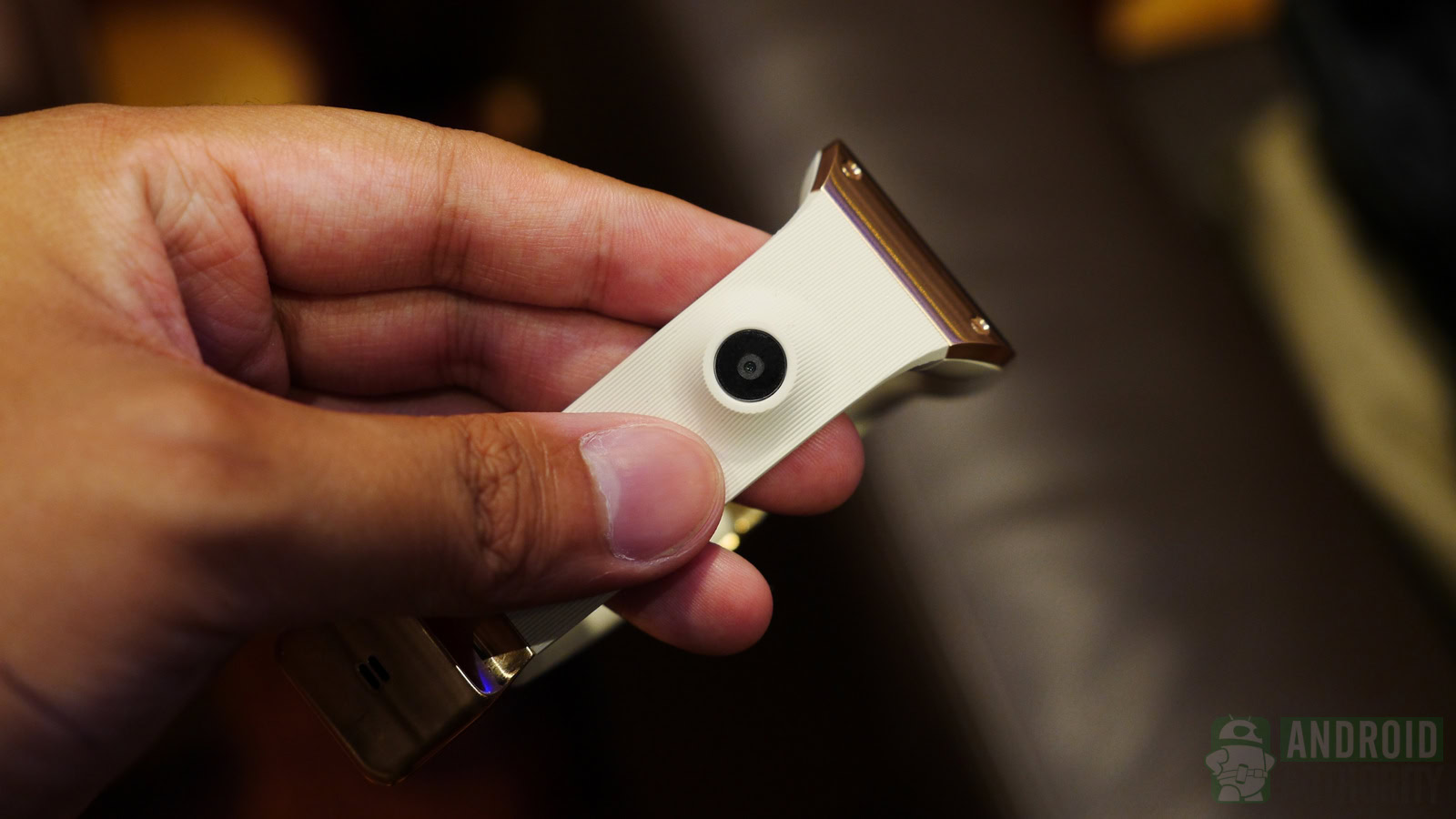
The Gear talks to the Note 3 (and presumably other Galaxy devices in the future) through Bluetooth LE. There aren’t other connectivity options on the Gear, not even NFC.
The device features a 315 mAh battery, which Samsung reps told us should keep the device running for 24 hours of “regular use”, though they did concede that heavier user should deplete it faster. The device has an interesting but potentially troublesome system for charging, in the form of a plastic cradle which connects to the watch through four metal pins found on its back. The cradle can be used with any regular USB cable. While we understand why Samsung went this way (putting a microUSB port on the device would be challenging in several ways) the idea of having another gizmo to carry around is a bit unappealing. That aside, the Gear automatically turns in dock mode when connected to the dock, which just shows the clock face.
Software

There’s no mention of Android in the official materials from Samsung, but PR staff did confirm to us that the Galaxy Gear is running on a modified version of Android Jelly Bean. They declined to specify which version, but given that Bluetooth LE support was only introduced in Android 4.3 that could be a safe bet.
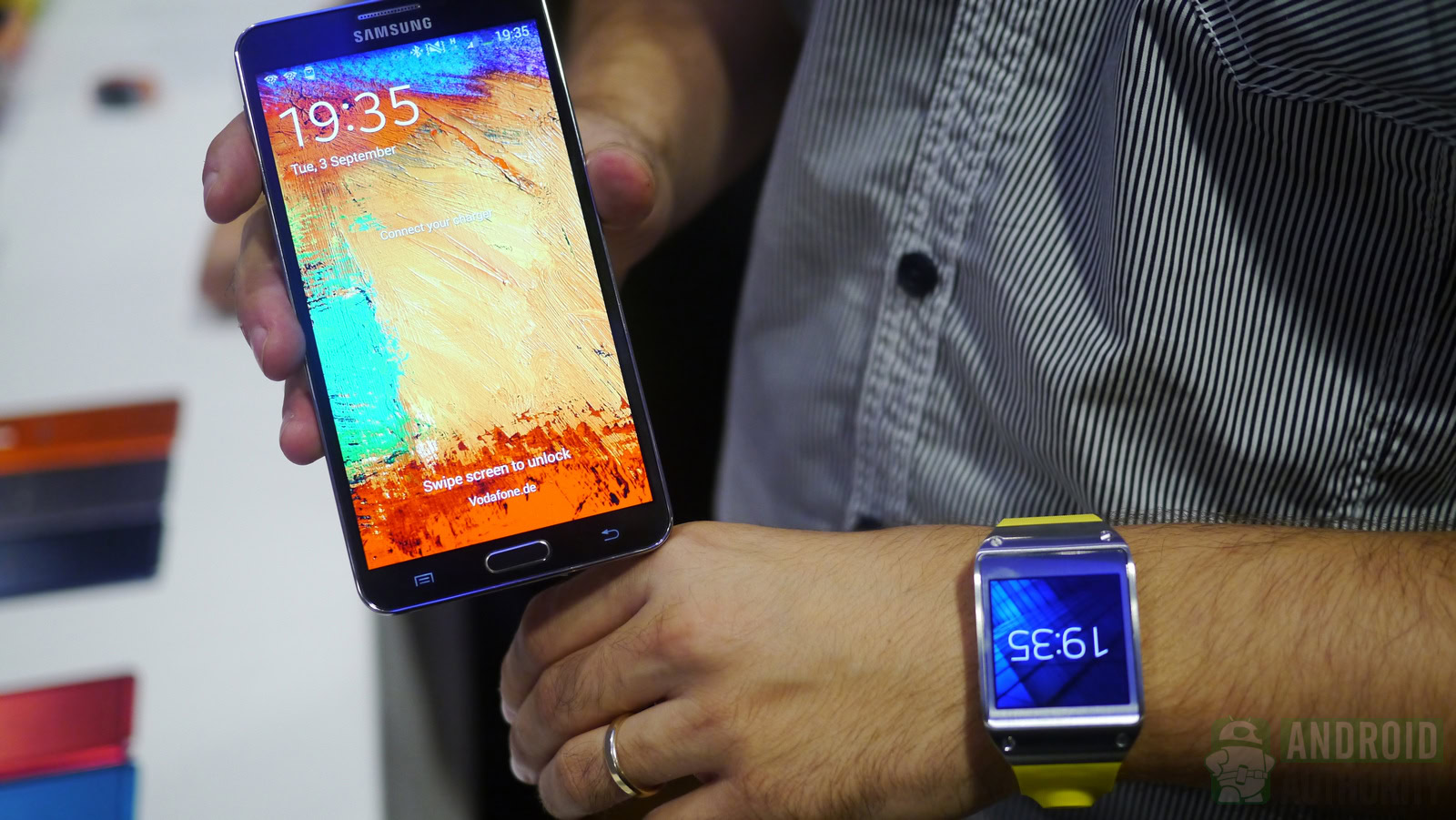
The user interface is very basic, and mostly icon based. The home screen is the watch face, which you can customize by picking from several options, both analog and digital. Swiping left and right from the home screen will get you through the various apps and settings available. Settings can also be accessed by tapping with two fingers on the homescreen.
Swiping from the top will take you back to the previous screen, while swiping from the bottom should open the camera.
The screens include Notifications, Settings, Camera, Pedometer, S Voice, Voice Memo, Memographer (Instagram-like app for capturing 10 second videos), Gallery, Find my Device (ring the Note 3 remotely), as well as various third party apps. Most notably, we’ve seen apps like Evernote, Line, Pocket, Path, RunKeeper. Samsung said that over 70 in-house and third-party apps will be available at launch.
For more details on the software features of the Galaxy Gear, check out this post from my colleague Nate Swanner.
Galaxy Note 3 integration
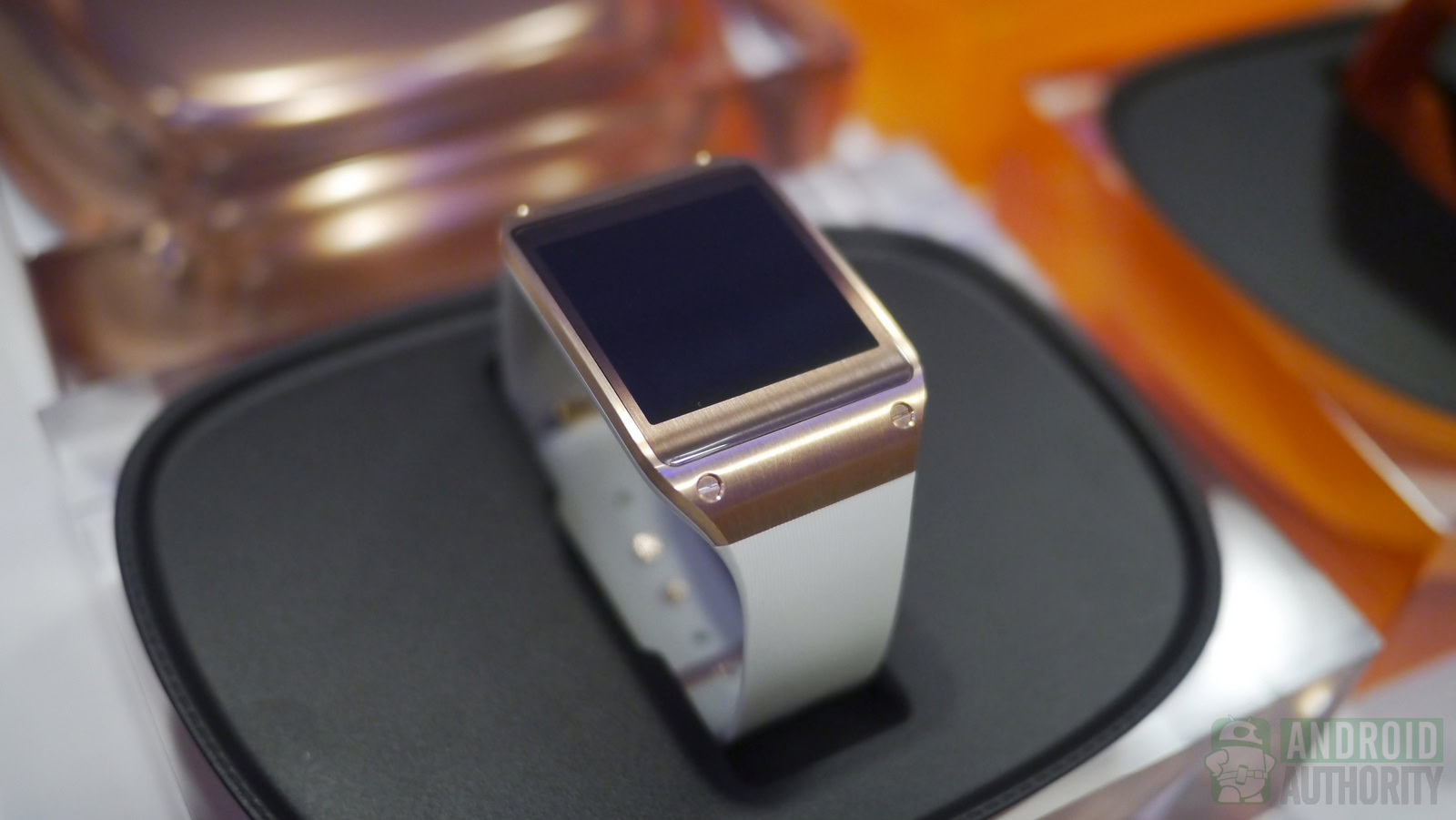
The Gear is designed as a companion for a Galaxy device, so while it can do some things on its own, it’s only really useful if you have it connected to your smartphone.
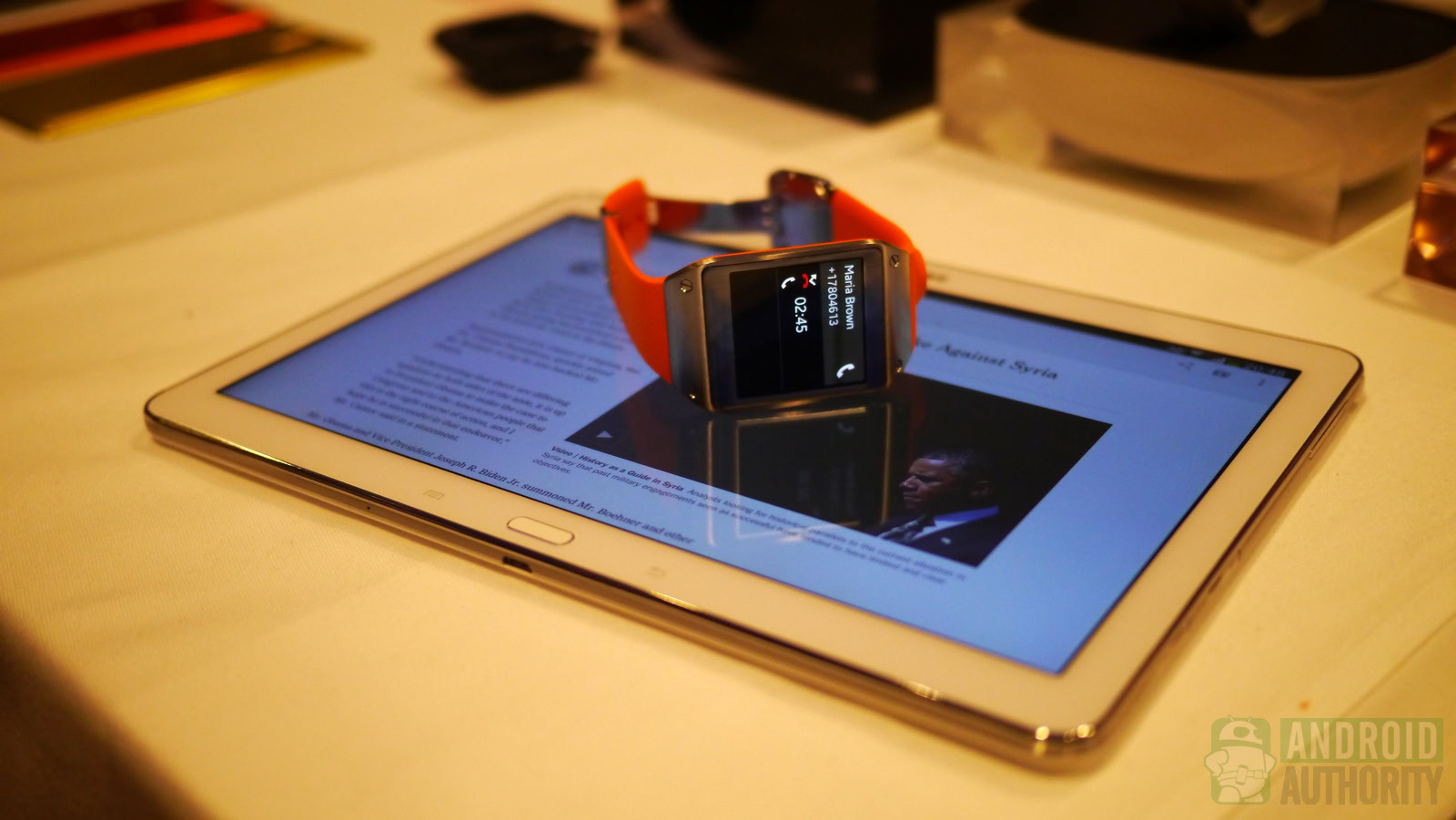
The Gear shows notifications for texts and messages that you received on the Note 3, though you can’t really act on them. The idea is to get a discrete notification on your wrist so you can tell if you want to pull out your Note 3 or not. If you view a notification and you turn on your Note 3, you will be taken to that text, call, or email, thanks to a feature called Smart Relay.
You can also make and take calls from the Gear, like you would from a Bluetooth headset. Using S Voice and voice recognition you can even dictate messages.
Installing apps and changing settings is done through the Gear Manager, an app that runs on the Note 3. From Gear Manager, you can change the color of the user interface, change the clock face, install and delete apps, and more.
Hands on video
Hands on Gallery
Wrap up
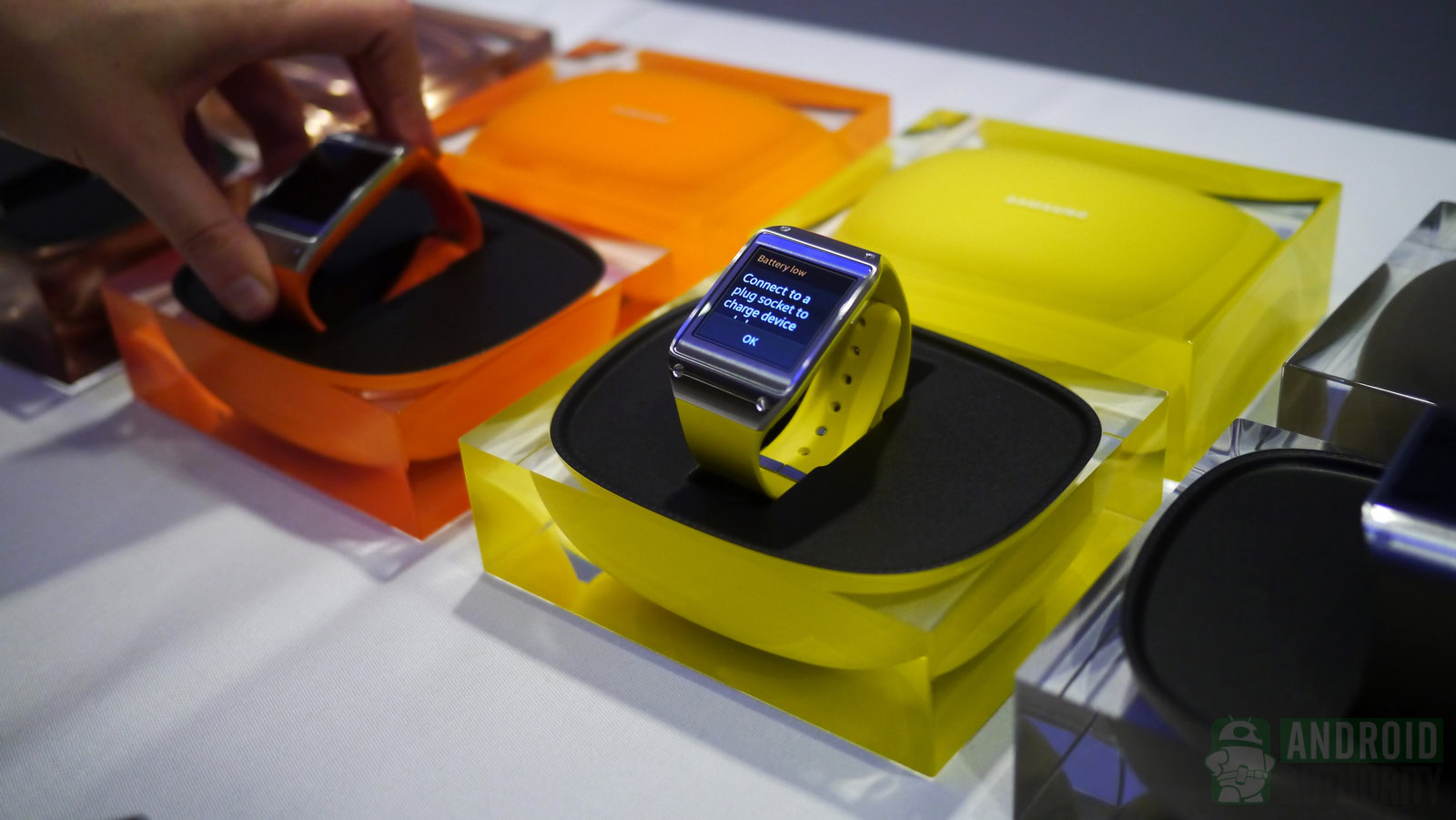
While a lot of thought clearly went in the making of the Galaxy Gear, we think that the device will have a limited appeal, especially if it’s expensive. The user interface, while functional, is not an example of usability and intuitiveness, which is only natural when you try to cram most the functionality of a smartphone in a 1.6-inch display. Also, the device stuttered at moments, and sometimes failed to recognize swipes and taps. Battery life may be another problem.
Some of the features offered by the Gear and Note 3 combo are really nice, and we see how they could become a part of some users’ digital lifestyle.
The smartwatch as a concept could turn out to be a niche success, and, once technology matures some more, it may even have mass appeal. We’ll have to wait for more time with a production unit of the Galaxy Gear before issuing any final judgments (the devices we saw were likely not final), but the Gear is clearly a first effort, and Samsung can, and must, work to improve many aspects of the user experience.